- Regulatory Status
- RUO
- Other Names
- HMG-1, amphoterin, chromosomal protein non histone HMG1
- Ave. Rating
- Submit a Review
- Product Citations
- publications
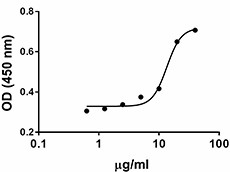
-

Human HMGB1 induces TNF-α in RAW 264.7 monocyte/macrophage mouse cells in a dose dependent manner.
| Cat # | Size | Price | Quantity Check Availability | Save | ||
|---|---|---|---|---|---|---|
| 557804 | 25 µg | $206 | ||||
High mobility group box 1 (HMGB1) is a protein highly conserved across species that is present in the nuclei (chromatin associated) and cytoplasm of all cells. In the cytoplasm, HMGB1 is a critical regulator of autophagy, enhances cell survival, and limits apoptosis. It also acts as a chaperone that reduces protein aggregation caused by heat or chemical stress. HMGB1 is released to the extracellular milieu by inflammatory cells and by necrotic and apoptotic cells. Once released, it functions as an inflammatory cytokine and it is secreted by macrophages and monocytes as a late response to LPS, TNF-α, IL-1β, or IFN-γ. Interestingly, the inflammatory activity of extracellular HMGB1 is dependent upon its redox state. The protein possesses three cysteine residues: C23, C45, and C106. In its reduced state, HMGB1, (-SH), has chemotactic activity; whereas HMGB1, with a disulfide bond between C23 and C45, induces cytokine production and the activation of NF-κB. The fully oxidized form has no immune function, losing its proinflammatory effect and the caspase-dependent apoptotic cell death activation function. HMGB1 interacts with several molecules, such as IL-1β, RNA, DNA, LPS, lipoteichoic acid (LTA), and CXCL12. Thus, HMGB1 displays greater proinflammatory activity through cytokine binding, and the chemotactic property is mediated by CXCL12 binding. Extracellular HMGB1 contributes to the pathogenesis of chronic inflammatory and autoimmune diseases, which include: sepsis, rheumatoid arthritis, atherosclerosis, chronic kidney disease, systemic lupus erythematosus, and cancer. It has also been associated to chronic pain and delayed gastric ulcer healing in mice.
Product DetailsProduct Details
- Source
- Human HMGB1, amino acids (Met1 - Glu215) (Accession# NM_002128), was expressed in 293E cells.
- Molecular Mass
- The 215 amino acid recombinant protein has a predicted molecular mass of approximately 24.8 kD. The DTT-reduced and non-reduced protein migrate at approximately 38 and 40 kD respectively by SDS-PAGE. The predicted N-terminal amino acid is Met
- Purity
- >95%, as determined by Coomassie stained SDS-PAGE.
- Formulation
- 0.22 µm filtered protein solution is in PBS, pH 7.2.
- Endotoxin Level
- Less than 0.01 ng per µg cytokine as determined by the LAL method.
- Concentration
- 25 µg size is bottled at 200 µg/mL.
- Storage & Handling
- Unopened vial can be stored between 2°C and 8°C for up to 2 weeks, at -20°C for up to six months, or at -70°C or colder until the expiration date. For maximum results, quick spin vial prior to opening. The protein can be aliquoted and stored at -20°C or colder. Stock solutions can also be prepared at 50 - 100 µg/mL in appropriate sterile buffer, carrier protein such as 0.2 - 1% BSA or HSA can be added when preparing the stock solution. Aliquots can be stored between 2°C and 8°C for up to one week and stored at -20°C or colder for up to 3 months. Avoid repeated freeze/thaw cycles.
- Activity
- ED50 of 3.0 - 15 µg/ml, as determined by induction of TNF-α in RAW 264.7 monocyte/macrophage mouse cells.
- Application
-
Bioassay
- Application Notes
-
BioLegend carrier-free recombinant proteins provided in liquid format are shipped on blue-ice. Our comparison testing data indicates that when handled and stored as recommended, the liquid format has equal or better stability and shelf-life compared to commercially available lyophilized proteins after reconstitution. Our liquid proteins are verified in-house to maintain activity after shipping on blue ice and are backed by our 100% satisfaction guarantee. If you have any concerns, contact us at tech@biolegend.com.
- Additional Product Notes
-
In-house comparison of recombinant mouse HMGB1 and recombinant human HMGB1 on their ability to induce TNF-a secretion by RAW 264.7 mouse monocyte/macrophage cells showed similar activity. Additional testing with AGER/RAGE showed also showed similar activity indicating these two products are interchangeable in these assays.
- Product Citations
-
Antigen Details
- Structure
- Cytokine.
- Distribution
-
Present in all cells' nuclei, released from a variety of cells including: activated macrophages/monocytes, pituicytes, human PBMC, maturing dendritic cells, and murine erythroleukemia cells
- Function
- HMGB1 activates inflammatory responses, induces chemotactic responses, and the releases of proinflammatory cytokines. It is induced by TNF-α, IL-1α, IFN-γ and LPS.
- Interaction
- T cells, macrophages, monocytes, dendritic cells, and neurons.
- Ligand/Receptor
- RAGE, TLR2, TLR4, and TLR9.
- Bioactivity
- Induces TNF-α in mouse RAW 264.7 macrophages.
- Biology Area
- Cell Biology, Immunology, Stem Cells, Transcription Factors
- Molecular Family
- Cytokines/Chemokines, Nuclear Markers
- Antigen References
-
1. Wang H, et al. 1999. Science 285:248.
2. Andersson U, et al. 2000. J. Exp. Med. 192:565.
3. Scaffidi P, et al. 2002. Nature 418:191.
4. Tang D, et al. 2010. J. Cell Biol. 190:881.
5. Venereau E, et al. 2012. J. Exp. Med. 209:1519.
6. Min HJ, et al. 2013. J. Immunol. 190:1797. - Gene ID
- 3146 View all products for this Gene ID
- UniProt
- View information about HMGB1 on UniProt.org
Related FAQs
- Why choose BioLegend recombinant proteins?
-
• Each lot of product is quality-tested for bioactivity as indicated on the data sheet.
• Greater than 95% Purity or higher, tested on every lot of product.
• 100% Satisfaction Guarantee for quality performance, stability, and consistency.
• Ready-to-use liquid format saves time and reduces challenges associated with reconstitution.
• Bulk and customization available. Contact us.
• Learn more about our Recombinant Proteins. - How does the activity of your recombinant proteins compare to competitors?
-
We quality control each and every lot of recombinant protein. Not only do we check its bioactivity, but we also compare it against other commercially available recombinant proteins. We make sure each recombinant protein’s activity is at least as good as or better than the competition’s. In order to provide you with the best possible product, we ensure that our testing process is rigorous and thorough. If you’re curious and eager to make the switch to BioLegend recombinants, contact your sales representative today!
- What is the specific activity or ED50 of my recombinant protein?
-
The specific activity range of the protein is indicated on the product datasheets. Because the exact activity values on a per unit basis can largely fluctuate depending on a number of factors, including the nature of the assay, cell density, age of cells/passage number, culture media used, and end user technique, the specific activity is best defined as a range and we guarantee the specific activity of all our lots will be within the range indicated on the datasheet. Please note this only applies to recombinants labeled for use in bioassays. ELISA standard recombinant proteins are not recommended for bioassay usage as they are not tested for these applications.
- Have your recombinants been tested for stability?
-
Our testing shows that the recombinant proteins are able to withstand room temperature for a week without losing activity. In addition the recombinant proteins were also found to withstand four cycles of freeze and thaw without losing activity.
- Does specific activity of a recombinant protein vary between lots?
-
Specific activity will vary for each lot and for the type of experiment that is done to validate it, but all passed lots will have activity within the established ED50 range for the product and we guarantee that our products will have lot-to-lot consistency. Please conduct an experiment-specific validation to find the optimal ED50 for your system.
- How do you convert activity as an ED50 in ng/ml to a specific activity in Units/mg?
-
Use formula Specific activity (Units/mg) = 10^6/ ED50 (ng/mL)
 Login/Register
Login/Register 







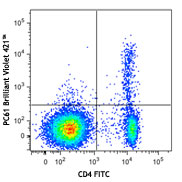
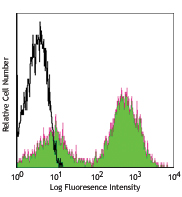
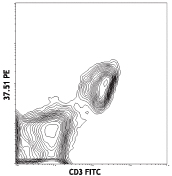
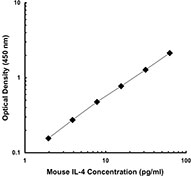



Follow Us